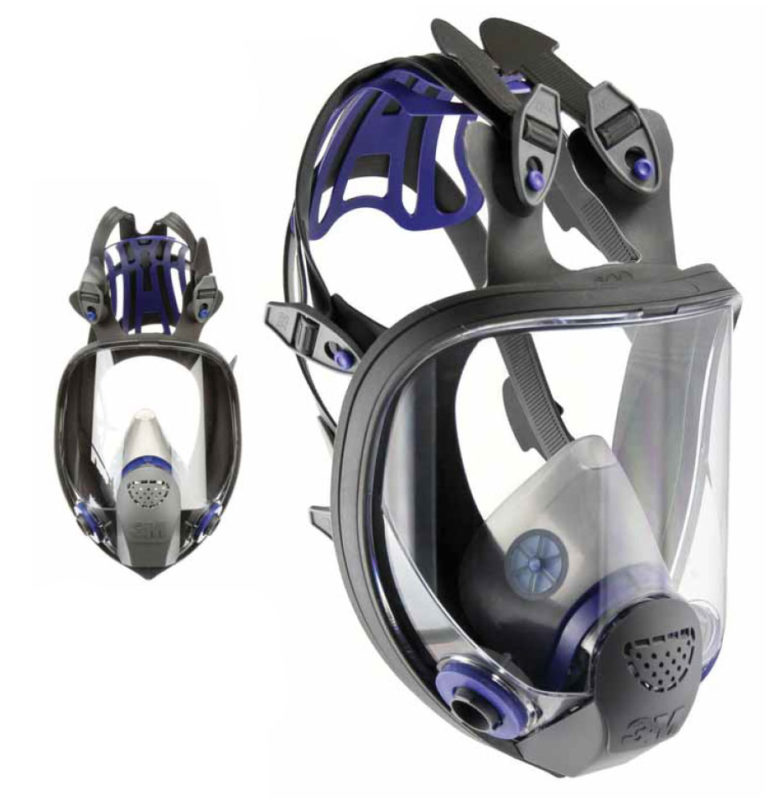
Avoiding safety complications in a knifemaker’s shop is essential. BLADE® polled some key players in the knife supply industry to see if there are any trends in motion in the area of shop safety. While everyone can agree that common sense is a good thing, and that certain stand-by items as fire extinguishers and safety glasses will always be among knife shop essentials, there has been somewhat of an evolution in this area.
Respirators for Knifemakers
“I think the biggest advance is really progress in bringing safety awareness to the knifemaking community,” observed Shanna Kemp, marketing manager at Jantz Supply. “For example, we see a marked increase in the use of respirators as makers come to understand that breathing in even small amounts of wood dust might not seem like a big deal, but over time it can really affect your lungs.”
She added that some woods, such as ebony, release small amounts of arsenic, so an increase in awareness of the dangers of particulates and resins is a good trend.
Dealing with Dust in the Knife Shop

A new addition to the line of Jantz safety products is the Benchtop Downdraft Sanding Table. The 20 x 40-inch dust-collection system is about 6 inches tall and connects to the maker’s vacuum system to help capture dust.
“I feel like everyone is more conscious of their health these days than they used to be,” agreed Shannon Edgington of Knife and Gun Finishing Supplies. She said that while there isn’t anything new or cutting edge in her inventory, she definitely agreed that particulate concerns have become more of an issue.
One budget solution K&G offers is the 3M N95 Respirator for Vapors that features the Cool Flow Exhalation Valve that reduces heat build-up inside the respirator.
Respirators That Don’t Need Replacing Often
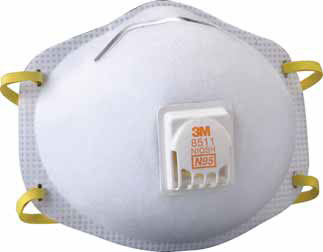
As buyers jump from budget-friendly dust masks to the newer, more effective respirators, they don’t have to be replaced as often.
“The technology has definitely come along so that people don’t have to replace as much,” she said. “It’s not like the old paper respirators that people are constantly replacing, which don’t filter out that much anyway.”
K&G and Jantz both offer the 3M 7500 Series Half-Face Respirator Mask, which features a better seal around the nose and mouth, and replaceable filter canisters for a better level of protection.
Best Respirators for Beards
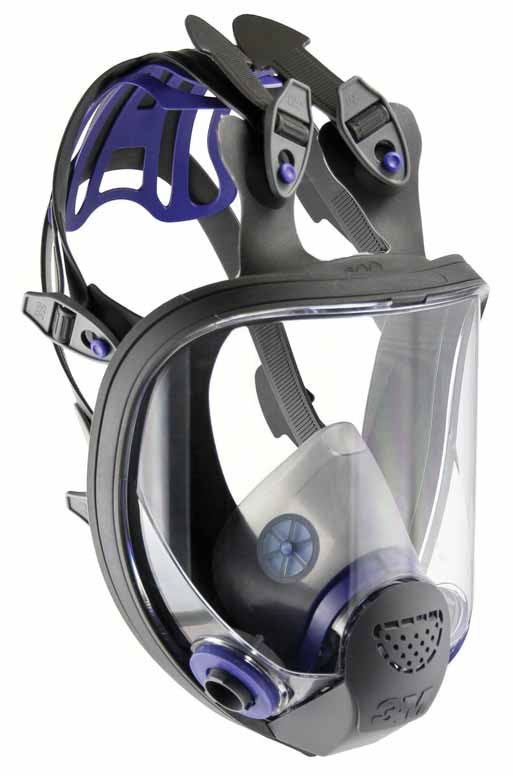
In the area of high-end respirators, Jeff Mutz, product consultant at Tru-Grit, has high praise for one particular model that he said solves a couple of problems for contemporary knifemakers. For starters, he noted that the concept of “form follows function” even applies to current personal fashion trends.
“One thing I was impressed with,” Mutz said of the 3M Ultimate FX Full Facepiece Respirator, “is that it works a lot better for guys with facial hair, which is a big thing these days. I’ve seen more and more guys using the full-face respirator, so it’s apparently becoming a popular thing.”
He recalled that a lot of guys who visit his shop have longer and/or larger beards, and he noticed they have trouble getting a good, tight fit with a regular dust mask, or even the half-face respirator. The 3M Ultimate FX isn’t fool proof for those who choose to wear beards, he admitted, but the full face piece keeps out a lot more particles than the others.
“Of course, they say to create a seal you’ve got to shave off the beard, but a lot of guys aren’t willing to do that,” Mutz laughed. “So this is the next best thing.”
He recalled a conversation with Scott Sharpe, owner of Tru-Grit, about the younger generation, which seems more conscientious about safety. Scott said that when younger guys walk into his shop while he’s grinding, often they will pull their shirts up over their noses out of concern for what could end up in their lungs.
Field of View and Safety Glasses
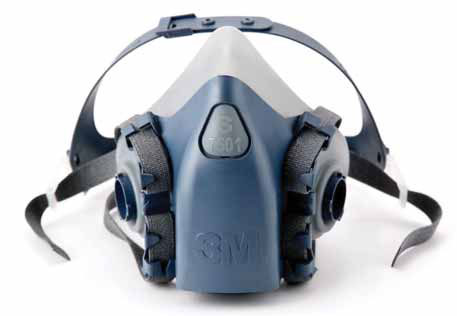
Another good thing about the 3M Ultimate FX Full Facepiece Respirator is a better field of view. Mutz said when he wears a half-face respirator and safety glasses, the glasses interfere with the nose piece because they are not designed to work well together.
“I’ve noticed that the best way to solve that is to tuck the safety glasses under the half-face respirator, which is worse because you’re inhaling even more dust,” he explained. “With the full face, you get a large field of view and you don’t have to worry about the safety glasses interfering.”
Hand Protection Tape

Kemp said a lot of people may be surprised by two of Jantz’s best-selling safety supplies: two types of tape. The first is basic 3M Blue Masking Tape, which is used to cover the blade edge to avoid cuts from sharp edges. She added that a bandage wrap by Guard-Tex called Self Adhering Safety Tape is also popular in the area of hand protection. It is used to protect skin when grinding, sanding or polishing, while also not being as restrictive as full gloves.
However, in the area of hand protection Mutz warns against the inevitable trade-offs. He recommends that if you wear hand protection, especially gloves, choose Kevlar rather than cloth or rawhide because the properties of the latter don’t play well with heat and moisture, which are both aspects of grinding in the shop.
Mutz recalled when, years ago, he tried grinding while wearing gloves and noticed the gloves got wet when he dipped the blade into a bucket of water to cool it. The heat from the blade quickly transferred through the water into one of his hands.
“I couldn’t get my glove off quick enough,” he remembered. “I’ve rubbed my hand against a 36-grit belt before and that doesn’t feel good either. It’s kind of a double-edged sword.”
Another problem he pointed out was that makers should want to feel the steel. If it is getting warm, be aware of it and cool it off before the heat compromises the structure of the material.
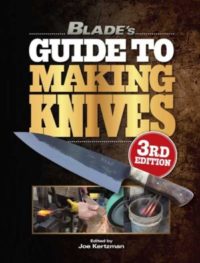
“Especially once it’s been heat treated,” he stressed. “You don’t want to soften the steel.”
Mutz teaches knifemaking classes and discusses safety with his students. He stressed that he’s pro safety, of course, but as far as hand protection goes he’s probably not the best guy to consult.
“If you look on Tru-Grit’s website we’ve got this thing called Alligator Skin, which is a protective tape. Then you’ve got the finger guards that are made out of canvas. I’m not going to tell my students not to wear them, but these are the things you’ve got to look out for,” he concluded.
Safety in the Knife Shop is Serious Business
Safety is and should be a concern for those who spend long hours in a knife shop, and all three sources for this story agreed that common sense is the foundation, which, Edgington laughed, “over the years hasn’t always been in great supply!”
 NEXT STEP: Download Your Free KNIFE GUIDE Issue of BLADE Magazine
NEXT STEP: Download Your Free KNIFE GUIDE Issue of BLADE Magazine
BLADE’s annual Knife Guide Issue features the newest knives and sharpeners, plus knife and axe reviews, knife sheaths, kit knives and a Knife Industry Directory.Get your FREE digital PDF instant download of the annual Knife Guide. No, really! We will email it to you right now when you subscribe to the BLADE email newsletter.






